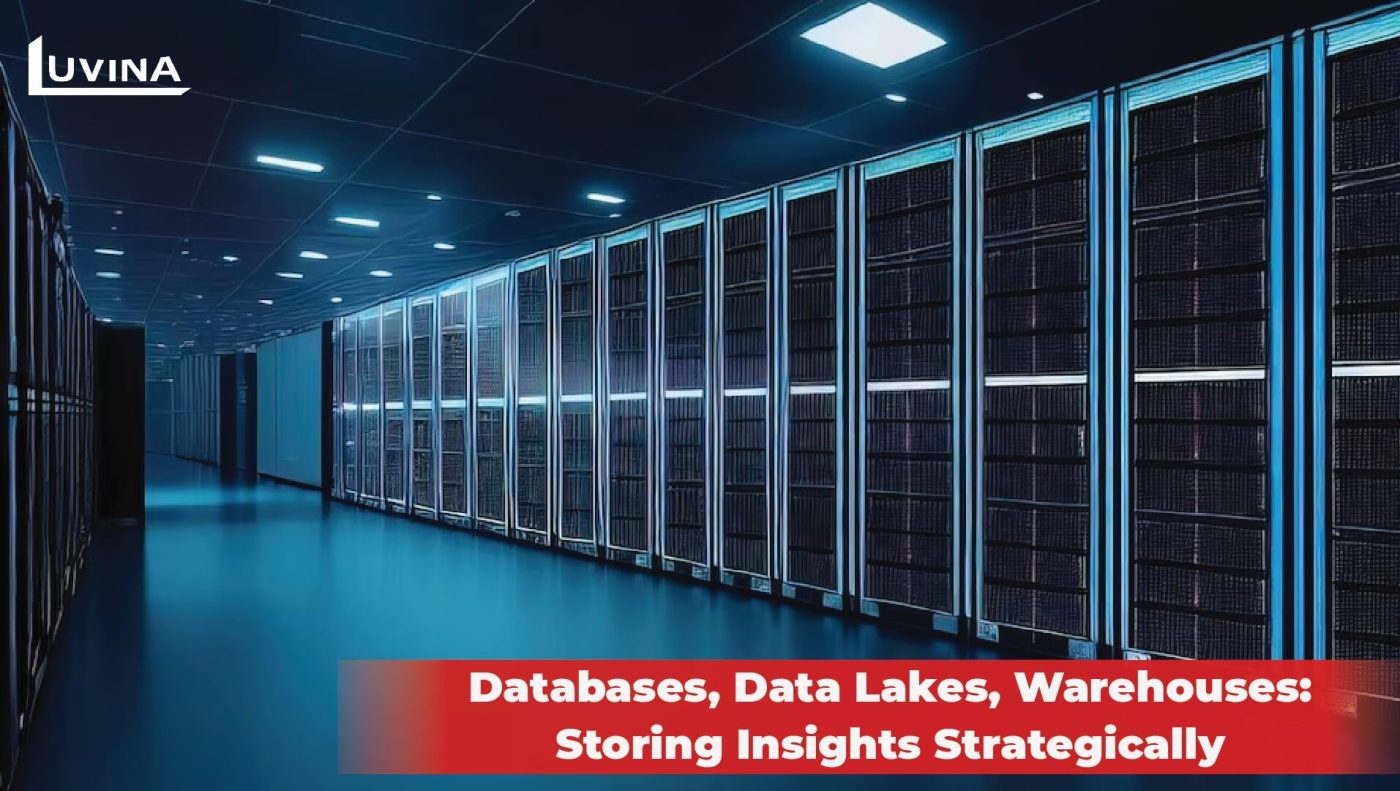Data engineering services form the backbone of transforming vast amounts of raw data into valuable insights for businesses. This pivotal domain encompasses the collection, processing, storage, and management of data, focusing on refining it into usable formats crucial for analytics, decision-making, and deriving business insights.
At its core, data engineering is about converting raw data into reliable, accessible formats that businesses can leverage for informed strategies and actions. In this overview, we’ll explore the significance and methodologies of data engineering services, highlighting their crucial role in unlocking the potential of data to drive growth and innovation across industries.

Functions of Data Engineering Services
Data engineering services encompass a suite of vital functions crucial for transforming raw data into actionable insights. From the initial collection of diverse data sources to its processing, storage, and management, these services form the backbone of structured data suitable for analysis. Data pipelines, ETL processes, and adherence to quality standards ensure seamless data flow, accuracy, and compliance. Leveraging big data technologies and stringent security measures, these functions collectively drive the conversion of data into a valuable business asset.
1. Data Collection and Ingestion
Data Collection and Ingestion represent the initial crucial phase in the data engineering process. This function involves the systematic gathering of information from an array of diverse sources, including databases housing structured data, APIs offering access to external repositories, IoT devices generating real-time data streams, logs recording system activities, and many other sources. The goal is to aggregate a wide spectrum of data types and formats, ensuring a comprehensive pool of information that will later undergo processing and analysis. This meticulous gathering process lays the groundwork for subsequent data refinement and utilization, forming the backbone for insightful analytics and informed decision-making within an organization.
2. Data Processing and Transformation
Data Processing and Transformation constitute the pivotal stage where raw, often disparate data is refined into structured and usable formats, setting the stage for meaningful analysis. This crucial function involves a multi-faceted process of cleaning, filtering, and manipulating raw data to ensure its reliability, consistency, and usability. Cleaning involves the removal of inconsistencies, errors, or duplicates, while filtering enables the selection of relevant data subsets aligned with specific analytical objectives.
Subsequently, transformation procedures reshape data into structured formats suitable for analysis, standardizing it for efficient processing. This process might involve converting data types, aggregating information, or even integrating multiple datasets to create a cohesive and comprehensive dataset. The objective is to convert raw data into a refined and structured form, laying the foundation for accurate, insightful, and actionable analysis, thereby empowering informed decision-making within the organization.
3. Data Storage and management
Data Storage and Management mark the phase where processed and refined data finds its dedicated home within appropriate repositories, ensuring accessibility and usability for analytical purposes. This crucial function involves the strategic storage of processed data in tailored environments such as databases, data lakes, or warehouses. Databases provide structured storage optimized for easy retrieval and are ideal for transactional or relational data.
Meanwhile, data lakes offer a more flexible and scalable storage solution, accommodating various data types and formats, and fostering a more exploratory approach to data analysis. Warehouses, on the other hand, serve as repositories optimized for analytical queries and reporting, facilitating efficient retrieval for in-depth analysis. This strategic placement of processed data within dedicated storage systems ensures its availability and accessibility, laying the groundwork for comprehensive analysis and informed decision-making processes within the organization.
4. Data Pipelines and ETL (Extract, Transform, Load)
Data Pipelines and ETL (Extract, Transform, Load) processes form the dynamic infrastructure responsible for the efficient movement and transformation of data across systems, ensuring its optimal utilization within an organization. Data pipelines are the backbone of this function, representing the constructed pathways that enable the seamless flow of data between various systems and stages of processing. Building and maintaining these pipelines requires meticulous planning and implementation to guarantee uninterrupted data flow, often involving integration tools, scheduling mechanisms, and monitoring protocols to ensure reliability and efficiency.

Simultaneously, the ETL process stands as a core component within these pipelines, encompassing Extract, Transform, and Load operations. Extract involves pulling data from diverse sources, transforming manipulating, and structuring this data into a usable format, and loading the processed data into target systems. This iterative process ensures data integrity, consistency, and usability across different platforms and systems. Together, these processes and pipelines constitute the backbone of data movement, harmonizing information flow across an organization and facilitating data-driven insights and decision-making.
5. Data Quality and Governance
Data Quality and Governance are the cornerstone of maintaining trustworthy and reliable data for analysis. This function focuses on ensuring data accuracy, consistency, and adherence to quality standards and regulations. It involves implementing rigorous measures to detect and correct errors, maintain uniformity across datasets, and ensure compliance with industry or legal requirements. These practices are guided by robust governance frameworks that establish clear protocols for data management, usage, and security, ensuring the reliability and integrity of organizational data assets.
6. Big Data Technologies
Big Data Technologies represent the innovative tools and frameworks essential for handling and processing large and complex datasets. This function revolves around leveraging cutting-edge technologies such as Hadoop, Spark, Kafka, and others, specifically designed to tackle the challenges posed by massive volumes of data.
Hadoop, renowned for its distributed file system and MapReduce processing, enables the storage and processing of extensive datasets across clusters of computers, ensuring scalability and fault tolerance. Spark, known for its in-memory processing and versatile analytics capabilities, accelerates data processing tasks, facilitating real-time analysis and machine learning operations.
Kafka, an efficient messaging system, facilitates the seamless and high-throughput movement of data across various systems in real-time, ensuring data availability for immediate processing and analysis. These and other big data technologies play a pivotal role in processing and analyzing massive datasets, offering scalability, speed, and efficiency essential for modern data engineering operations.
7. Data Security and Privacy
Data Security and Privacy involve measures that safeguard sensitive data from unauthorized access or breaches. These measures include robust security protocols, access controls, encryption, and compliance with data protection regulations. By prioritizing data security, organizations ensure the confidentiality and integrity of valuable information, mitigating risks and maintaining trust in their data handling practices.
Key Aspects of Data Engineering Services
Within the expansive realm of data engineering services, several key facets stand out as vital pillars shaping the landscape of data utilization and analysis. These pivotal aspects encompass the strategic handling, processing, and utilization of data assets, aiming to harness their full potential for actionable insights and informed decision-making. From the seamless integration and aggregation of data from diverse sources to the development of systems that ensure scalability and optimal performance, these aspects form the bedrock of data engineering. Real-time data processing capabilities, integration with machine learning and AI models, and dedicated support for analytics and reporting underscore the transformative potential of these services. Together, they navigate the complex terrain of data handling, setting the stage for businesses to derive meaningful value and competitive advantages from their data assets.

1. Data Integration and Aggregation
Data Integration and Aggregation represent the fundamental process of harmonizing information from various disparate sources into a cohesive and unified dataset, laying the groundwork for comprehensive analysis and insights. This pivotal function involves the meticulous merging of data acquired from diverse channels, which could include databases, applications, IoT devices, social media, and other repositories, regardless of their format or structure. The objective is to create a single, cohesive view that consolidates these diverse datasets into a standardized and uniform format. This process eliminates inconsistencies, resolves conflicts, and ensures that data is aligned and compatible, enabling organizations to derive a holistic view of their operations, customers, or any facet under analysis.
Ultimately, the unified dataset serves as the foundation for accurate and comprehensive analysis, empowering businesses to extract valuable insights and make informed decisions based on a consolidated and comprehensive understanding of their data.
2. Scalability and Performance
Scalability and Performance in data engineering involve designing systems capable of efficiently handling vast amounts of data without compromising speed or responsiveness. This entails creating flexible architectures that can scale up or out to accommodate growing data volumes. Optimization strategies like data partitioning and parallel processing ensure systems remain efficient and responsive even with extensive data loads. By prioritizing scalability and performance, organizations ensure their systems can manage large datasets while maintaining optimal operational speed and efficiency.
3. Real-time Data Processing
Real-time Data Processing stands as a foundational aspect of data engineering, focusing on the construction and deployment of systems capable of handling and swiftly processing incoming data streams instantaneously. This crucial function caters to the increasing demand for immediate insights from continuously generated data sources, enabling organizations to react promptly to evolving scenarios, make agile decisions, and derive actionable insights in real-time. Building such systems involves the integration of specialized technologies, frameworks, and architectures that facilitate the instantaneous processing of data as it arrives, without any significant latency.

These systems often leverage stream processing frameworks like Apache Kafka, Apache Flink, or AWS Kinesis, enabling the seamless ingestion and processing of data streams with minimal delay. Real-time data processing frameworks enable organizations to perform rapid computations, data transformations, and analytics on the fly, facilitating the generation of immediate insights. By deploying these systems, businesses gain the ability to respond swiftly to emerging trends, identify anomalies in real-time, and make proactive decisions based on the most up-to-date information available.
Ultimately, real-time data processing forms a critical cornerstone in modern data engineering, empowering organizations to harness the power of instantaneous insights for agile decision-making and staying ahead in dynamic and fast-paced environments.
4. Machine Learning and AI Integration
Machine Learning and AI Integration within data engineering involve preparing clean, structured datasets crucial for training machine learning models. This process ensures that the data is error-free, relevant, and formatted to facilitate accurate model training. By providing quality data, data engineering supports the development of robust and accurate predictive models, enabling organizations to derive valuable insights and automate decision-making processes.
5. Analytics and Reporting Support
Analytics and Reporting Support in data engineering involves preparing structured and organized data specifically tailored for analytics, reporting, and visualization purposes. This process ensures that data is cleaned, organized, and formatted to facilitate comprehensive analysis, detailed reporting, and intuitive visualization. By providing this well-structured data, organizations can derive meaningful insights and make informed decisions.
Importance of Data Engineering Services
Data Engineering Services hold immense importance in the modern business landscape for several compelling reasons.
Firstly, these services play a pivotal role in fostering a culture of data-driven decision-making within organizations. By providing reliable, well-structured data, data engineering enables businesses to base their decisions on concrete insights derived from comprehensive data analysis. This leads to informed and strategic decision-making processes, reducing uncertainty and enhancing the accuracy of business strategies.

Secondly, data engineering consulting solutions are instrumental in extracting valuable insights from voluminous datasets, offering businesses a treasure trove of information essential for strategic planning, forecasting, and enhancing operational efficiency. These insights, derived through meticulous analysis, allow organizations to anticipate market trends, identify growth opportunities, and optimize existing operations for improved outcomes.
Moreover, the integration of efficient data engineering processes significantly enhances operational efficiency within organizations. By automating data processing, reducing manual interventions, and streamlining workflows, these services optimize operational processes, saving time and resources while ensuring accuracy and reliability in data handling.
Lastly, leveraging robust data engineering confers a competitive edge to organizations in today’s dynamic market. Those proficient in harnessing data effectively gain a strategic advantage, utilizing insights for innovation, product development, and identifying customer needs. This proactive approach positions businesses at the forefront of their industries, fostering innovation and enabling sustainable growth.
In essence, data engineering services serve as the cornerstone for modern businesses, offering not just data but invaluable insights, efficiency improvements, and a competitive edge, ultimately contributing to sustained growth and success in today’s data-centric business environment.
Data engineering services play a critical role in managing and optimizing data infrastructure, enabling organizations to harness the power of data for informed decision-making and business success.










Read More From Us?
Sign up for our newsletter
Read More From Us?
Sign up for our newsletter